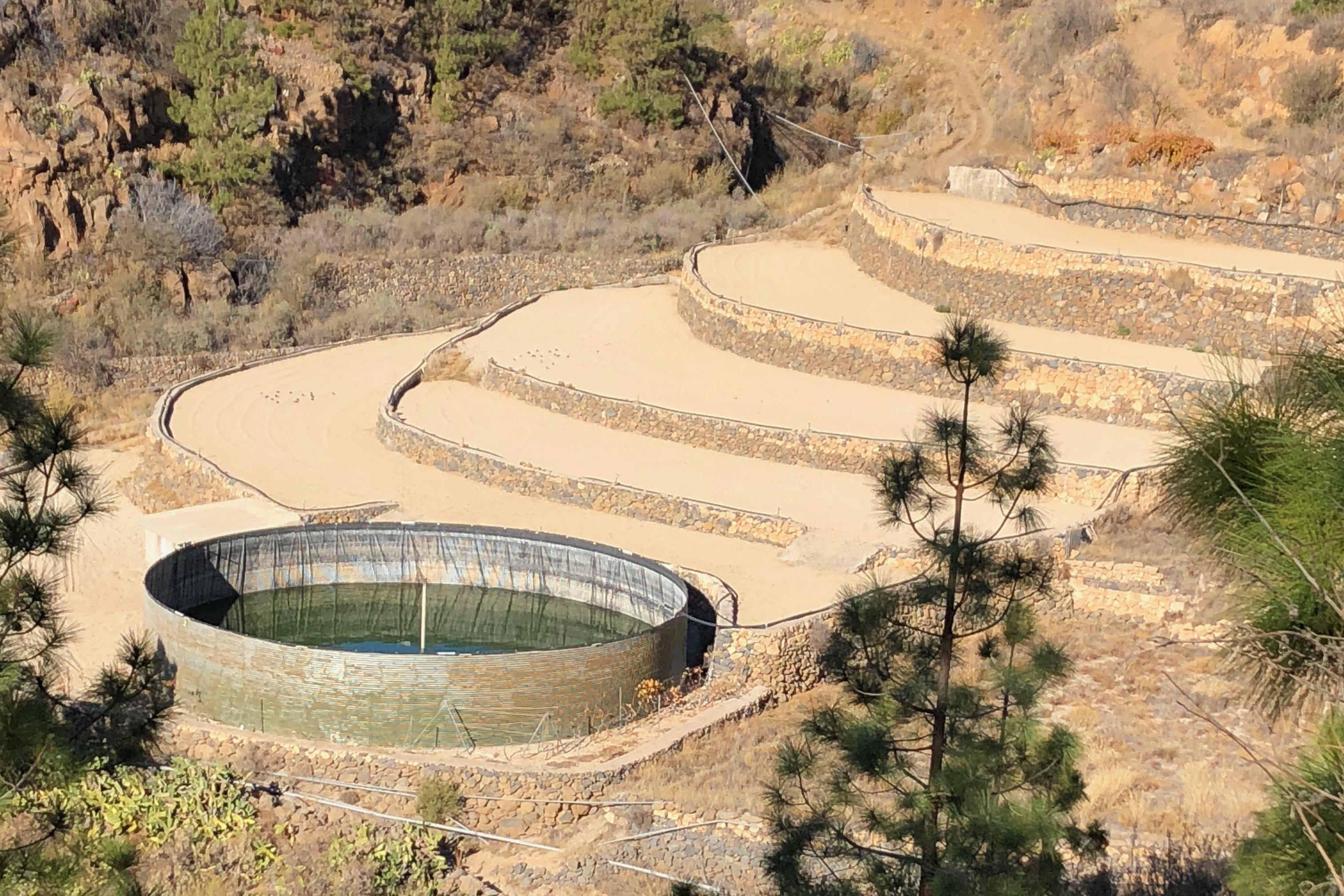Press Releases Archive
24.09.2018
Traditional methods of farming in a dry climate
University of Tübingen researchers investigate past techniques for living with water scarcity
Forest and brush fires, water shortages and crop failure – these have been the effects of summer 2018 in large parts of Europe. Climate scientists are calling for new agricultural policies, saying farmers need to prepare for greater extremes of temperature and weather. Researchers at the Tübingen collaborative research center (SFB) ResourceCultures are investigating how agrarian societies in the past learned to deal with heat and aridity while still producing food.
“Lack of water is a problem for which there are many historical examples,” says Dr. Laura Dierksmeier, who is researching island economies in the early modern age as part of a ResourceCultures project. “But, as history shows, there are just as many solutions. We can find workable approaches for the future by looking at the past.” Water as a resource is an important factor, Dierksmeier points out. Its availability and distribution can ultimately underpin social stability and cooperation.
The Dehesa landscapes of the southern Iberian Peninsula are a prime example: for thousands of years, farmers there have had to survive the long dry summers. In an interdisciplinary project, SFB spokesman Professor Martin Bartelheim and a team of archaeologists are working with cultural anthropologists led by Professor Roland Hardenberg at the University of Frankfurt to examine the formation and use of the Dehesa. The characteristic groves of oak and olive trees were planted as early as 2,800 to 4,000 years ago – and have survived all the climate changes since. The native domesticated animals – Ibérico pigs, Merino sheep and Retinta sheep and goats – have been grazing the Dehesa since the Bronze Age. Both the animals and the landscape are ideally suited to the climatic conditions. While the trees ensure that the small amount of rain which falls in Andalusia and Extremadura does not evaporate, but seeps slowly into the water table, the grazing animals prevent the landscape from becoming covered in underbrush, creating an open forest in less danger of damaging fires.
Ancient solutions to the water-supply problem are the focus of archaeologists Dr. Frerich Schön and Hanni Töpfer, headed by Professor Thomas Schäfer, in another project dealing with more than one hundred cisterns on the Italian islands of Linosa and Pantelleria. The cisterns held between five and 100 cubic meters of water. They were cut into the rock by Punic settlers from the 8th century BCE and later expanded by the Romans. Some of these subterranean water storage pits are still in use today. Such systems were essential to avoid the labor-intensive transportation of water, particularly in areas with little groundwater. Subterranean cisterns are relatively easy to maintain and they keep the water cool and clean. They also help to prevent soil erosion by collecting excess water in heavy rain.
The researchers are also looking at the effects of long-term water scarcity on the respective societies. The historian Dr. Laura Dierksmeier, led by Professors Renate Dürr and Jörn Stäcker, is investigating the economic and social ramifications of water scarcity in island societies of the Late Middle Ages and the Early Modern Age. Islands often lack fresh water and are therefore particularly vulnerable.
Dierksmeier has found a clear connection between income and access to clean water. On the Canary Islands and the Balearic Islands, this led to social tensions, conflict and crime. Diseases broke out because there was not enough water for personal hygiene and to keep hospitals clean. Children and old people were worst affected. In an attempt to improve the situation, water was allocated to individuals on a quota system. This was meant to ensure that this scarce resource got to the people who needed it most. But it had the opposite effect: a general resource slowly became a commodity to be sold to the highest bidder. “Water police” were introduced to determine who owned the water, to check the water quality, and to punish those who polluted it. Academic societies such as the Sociedad de Amigos del País were formed to debate the best way to administer water resources, and to find ways of extracting fresh water from fog, snow, and sea water.
Contact
Professor Dr. Martin Bartelheim
University of Tübingen
Institute of Prehistory and Medieval Archaeology
Prehistory Section
martin.bartelheim@uni-tuebingen.de
Phone +49 7071 29-72406
Dr. Frerich Schön
University of Tübingen
SFB 1070 ResourceCultures.
frerich.schoen@uni-tuebingen.de
Phone +49 7071 29-77390
Dr. Laura Dierksmeier
University of Tübingen
Institute of Modern History
laura.dierksmeier@uni-tuebingen.de
Phone +49 7071 29-73595
Eberhard Karls Universität Tübingen
Public Relations Department
Dr. Karl Guido Rijkhoek
Director
Janna Eberhardt
Research Reporter
Phone +49 7071 29-76753
Fax +49 7071 29-5566
janna.eberhardt@uni-tuebingen.de
www.uni-tuebingen.de/en/university/news-and-publications.html

